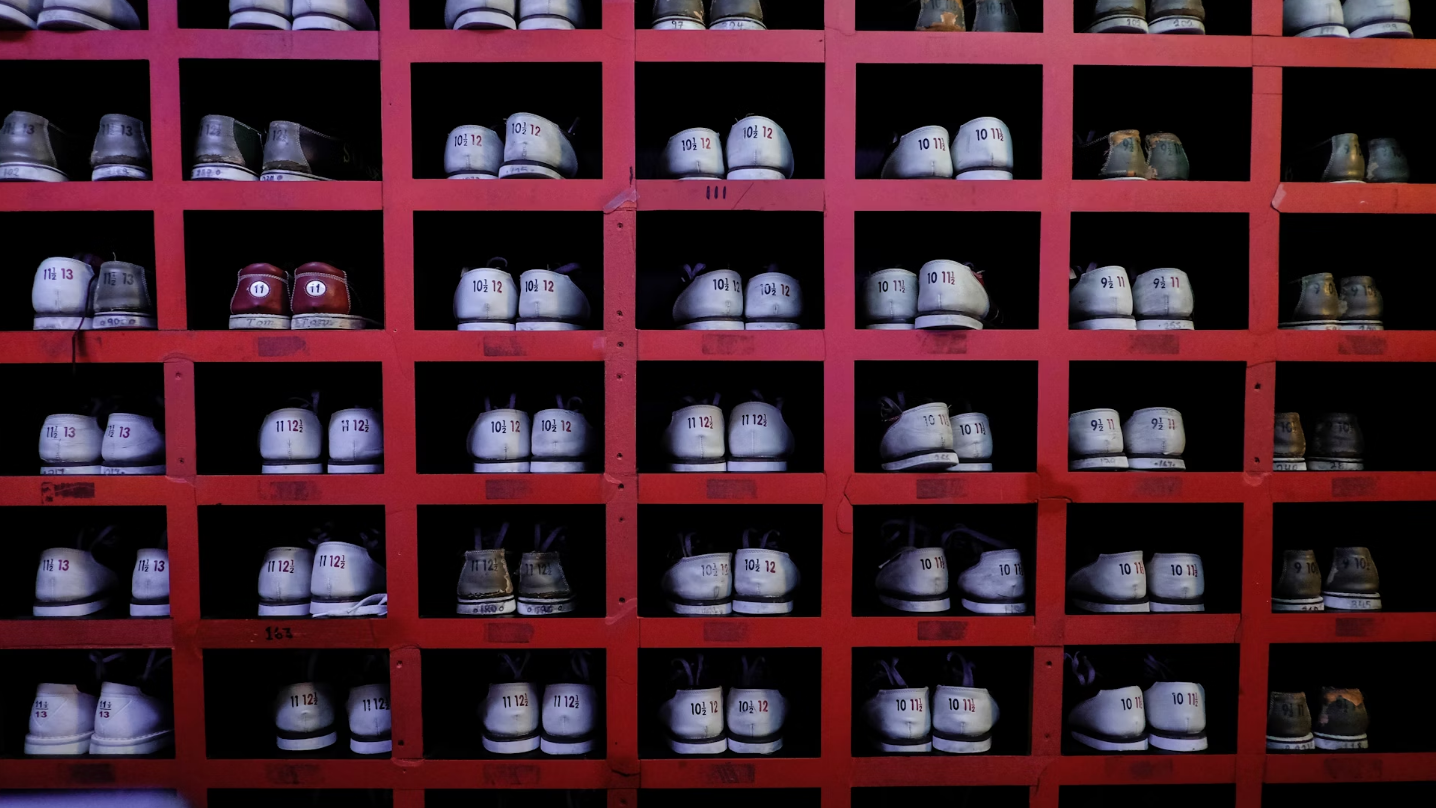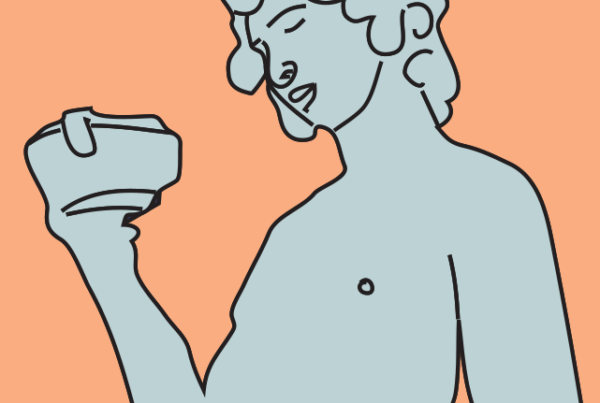
“The question of what you own is actually the question of how you want to live” – Marie Kondo
From OCD to hoarding, from minimalist aesthetics to maximalist indulgence, the last-longing counterparts have balanced out each other over time, meddling into all aspects of our lives through an interplay between order and chaos. These opposing tendencies manifest across cultural movements, psychological behaviors, and lifestyle choices, each reflecting deeper psychological needs and societal influences. But is it truly necessary to align ourselves strictly with one of these extremes?
“The question of what you own is actually the question of how you want to live” – Marie Kondo
From OCD to hoarding, from minimalist aesthetics to maximalist indulgence, the last-longing counterparts have balanced out each other over time, meddling into all aspects of our lives through an interplay between order and chaos. These opposing tendencies manifest across cultural movements, psychological behaviors, and lifestyle choices, each reflecting deeper psychological needs and societal influences. But is it truly necessary to align ourselves strictly with one of these extremes?

Photo by Alev Takil

Photo by Alev Takil
In recent years, an increasing focus on trait-like people categorisation has emerged. It seems millennials and Gen Z thrive in aiming to explain peers’ behaviors to accompanying personality types and patterns, so, understandably, models such as the DISC, using letters (DISC, n.d.), or the BRIDGE, using colors (Validating Insights Discovery, n.d.) to classify people, have gained momentum lately. More importantly, a particular pattern can be seen among the different models: the indispensable type A, Red, and Dominance profile. Despite the wide variety, the predominant common factor has always been the depiction of a person who cannot live without organization and structure, and whose functioning depends on the methodological and rational analysis of events. But the question arises when we wonder up to what point is this personality type of normal functioning, and when does it surpass the line to unhealthy behaviours. Media portrayals of Obsessive-Compulsive Disorder (OCD) trait-specific characters have turned the syndrome into common knowledge for the Gen Z, with behaviours such as excessive cleaning or the strong need for routines and repetitive behaviours. As explained in the revised version of the DSM 5 (American Psychiatric Association, 2022), OCD is characterized by the presence of obsessions, conceived as recurrent and persistent thoughts, urges, or images that are experienced as intrusive and unwanted; and compulsions, repetitive behaviors or mental acts that an individual feels driven to perform in response to an obsession. In contrast, media has commonly portrayed the disorder in a more stereotyped way, centring on specific popular phobias such as that of contamination, constant checking, or a need for symmetry and order. Currently, (OCD) platform creators on social media, like Tiktok, have started to host content aimed at making the OCD perspective more down-to-earth, showing how the disorder may look in more conventional and day-to-day activities, which therefore, might go unnoticed. This growth in the content’s popularity has backfired, mainly leading to a widespread romanticization of the obsession with order, and the non-clinical self-diagnosis of the disorder. But why do people want to be socially recognized with the disorder? Why has this need for order become so popular?
In 2011, Marie Kondo published her best-selling book, The Life-Changing Magic of Tidying Up, which would be seen as the tipping point of her career. After that, households around the world started applying these simple and practical tips that would help organize and minimize every possible corner. After the big success, she developed a business around the so-called KonMari Method. The approach consists of a simple but effective organizing system that uses a transformative criterion: choosing what sparks joy. With the Method, you will learn to listen to your inner voice and make space for the life you want, Kondo says. She aims to transmit more than just a guideline for organizing, but a lifestyle. Reduced clutter leads to increased focus, to renewed energy, and lastly, to a more fulfilled life. If something brings you joy, keep it! Almost in a religious manner, Kondo incites us to thank them for their service, then let them go.
Even though Marie Kondo has stated that her method is not minimalism, it is for sure based on this philosophy. It embodies the practicality of only owning what you use, and discarding irrelevant materials for the peace of mind.
“If something brings you joy, keep it! Almost in a religious manner, Kondo incites us to thank them for their service, then let them go.”
But why did Marie Kondo rise to fame? At the end of the day, there is supply where there is demand. A cultural shift towards minimalism came about in the second decade of the century, after the 2008 financial crisis, implicitly challenging the course of economic productivity, consumption, and growth. The happenings promoted principles of minimalism and renouncing, and little by little, an “alternative hedonism” infected the population, creating a new, more simplistic and pragmatic perspective on everyday consumption, enjoyment, and morality (Meissner, 2019). This evolving mindset is what made possible that a growing business niche would very soon be filled with books, trends, documentaries, and media content on principles based on decluttering, intentional living, and letting go – becoming a philosophy more than a cleaning hack.
But if discarding and tidying gives peace of mind, why are there some people who thrive on chaos? In the aforementioned models, another pattern of personality type is prominent: the all-over-the-place type B, Yellow, or Conscientious profile.
The opposite end of the balance has also had enormous repercussions in society in the last decades. Maximalism, overconsumption, and fast-fashion are some of the terms that might ring a bell to the reader. With stores such as Costco, Walmart, or Inditex brands such as Zara and Pull and Bear, mass consumption has been facilitated for the middle-class population. Though this trend has had its impact in society far more than minimalism, with the rise of consumer capitalism and economic booms in Western countries around the 1980s, mass production and social media have been a critical point to the trend, given the constant promotion of a luxurious and maximalist lifestyle. The birth of a new term, affluenza, has become increasingly popular in this generation. The concept refers to a painful, contagious, socially transmitted condition of overload, debt, anxiety, and waste resulting from the dogged pursuit of more. The affluenza epidemic is rooted in the obsessive, almost religious quest for economic expansion that has become the core principle of what is called the American dream. The new measure of life success is in becoming materially wealthier than our predecessor generation and pursuing that end without damaging the other aspects of our lives we hold dear (DeGraaf et al., 2014).
Both trends may co-exist in society, and within an individual, we may experience moments of our lives where we impersonate both. But we always have an intrinsic nature that leads us towards one. Some people live more in comfort when surrounded by mess, disorder. They would rather have their walls filled with posters than have a white wall staring at the; a bag full with useless pens that will never see the sun again; a house crammed with reminders of elusive memories; and a collectiion of pieces of what defines themselves – the coaster of a first date, sentimental t-shirts that will never be worn, or a strange gadget that you don’t know the purpose of but will keep it just in case. But this behaviour can become problematic when it becomes obsessive and impairs aspects of life. While there is no such thing as a disorder that confines within it an obsession for the messiness around, there is one that lives around it and seems not to care about living in it. Hoarding disorder is characterized by persistent difficulty discarding or parting with possessions, regardless of their actual value, as a result of a strong perceived need to save the items and distress associated with discarding them. Symptoms of hoarding disorder result in the accumulation of a large number of possessions that congest and clutter active living areas to the extent that their intended use is substantially compromised (APA, 2022). The excessive acquisition form of hoarding disorder, which characterizes most but not all clinical individuals, consists of an extreme pattern of collecting, buying, or stealing of items that are not needed or for which there is no available space.
“Affluenza: a painful, contagious, socially transmitted condition of overload, debt, anxiety, and waste resulting from the dogged pursuit of more.”
Given their disparity, one would not imagine that these two disorders, OCD and Hoarding Disorder, share the same category in the DSM-5: obsessive-compulsive and related disorders. Aside from their phenomenological presentation, both disorders stem from an obsessive, uncontrollable need to act and have their surroundings in a peculiar way that impairs different areas of their life. Despite stemming from the same roots, societal narratives often portray order as inherently good and chaos as inherently bad. Order and minimalism reflect self-discipline, clarity, and harmony, while chaos and hoarding tendencies are linked to irresponsibility, excess, and lack of willpower. Yet, as demonstrated, morality and suitability lie within the individual. Some thrive in meticulously curated environments, while others find comfort in spaces filled with sentimental items and cluttered spaces. Maybe, contrary to what we have always been told, moral judgment lies where dysfunctionality begins, instead of demonizing one tendency.
The interplay between order and chaos is deeply embedded in human psychology and societal structures, influencing how individuals shape their environments and perceive their well-being. While minimalism and maximalism may seem like polar opposites, both stem from deeply ingrained emotional and psychological needs. Whether through the structured serenity of the KonMari method or the sentimental embrace of clutter, each approach offers a sense of control and identity. However, when these tendencies become excessive, manifesting in obsessive organization or hoarding, they can disrupt daily life and mental health. Ultimately, rather than moralizing one lifestyle over another, it is essential to recognize the personal and cultural influences that drive these behaviors. Finding a balance that aligns with one’s values and needs, rather than adhering strictly to societal expectations, is key to a sustainable and fulfilling way of living.
So on which side do you thrive more?
References
- American Psychiatric Association. (2022). Diagnostic and statistical manual of mental disorders (5th ed., text rev.). American Psychiatric Publishing.
- De Graaf, J., Wann, D., & Naylor, T. H. (2014). Affluenza: How Overconsumption Is Killing Us–and How to Fight Back. Berrett-Koehler Publishers.
- DISC. (n.d.). TTI Success Insights. https://www.ttisi.com/disc/
- Meissner, M. (2019). Against accumulation: lifestyle minimalism, de-growth and the present post-ecological condition. Journal of Cultural Economy, 12(3), 185–200. https://doi.org/10.1080/17530350.2019.1570962
- Kondo, Marie. “Home – KonMari | the Official Website of Marie Kondo.” KonMari | the Official Website of Marie Kondo, 28 Feb. 2025, konmari.com/?srsltid=AfmBOoqEKymxtA_KbZ15i-WY72aahGIubO1YVR_f0VAvUIgKEWW6IJhQ. Accessed 17 Mar. 2025
- Validating Insights Discovery. (n.d.). Www.insights.com. https://www.insights.com/what-we-do/validity/
In recent years, an increasing focus on trait-like people categorisation has emerged. It seems millennials and Gen Z thrive in aiming to explain peers’ behaviors to accompanying personality types and patterns, so, understandably, models such as the DISC, using letters (DISC, n.d.), or the BRIDGE, using colors (Validating Insights Discovery, n.d.) to classify people, have gained momentum lately. More importantly, a particular pattern can be seen among the different models: the indispensable type A, Red, and Dominance profile. Despite the wide variety, the predominant common factor has always been the depiction of a person who cannot live without organization and structure, and whose functioning depends on the methodological and rational analysis of events. But the question arises when we wonder up to what point is this personality type of normal functioning, and when does it surpass the line to unhealthy behaviours. Media portrayals of Obsessive-Compulsive Disorder (OCD) trait-specific characters have turned the syndrome into common knowledge for the Gen Z, with behaviours such as excessive cleaning or the strong need for routines and repetitive behaviours. As explained in the revised version of the DSM 5 (American Psychiatric Association, 2022), OCD is characterized by the presence of obsessions, conceived as recurrent and persistent thoughts, urges, or images that are experienced as intrusive and unwanted; and compulsions, repetitive behaviors or mental acts that an individual feels driven to perform in response to an obsession. In contrast, media has commonly portrayed the disorder in a more stereotyped way, centring on specific popular phobias such as that of contamination, constant checking, or a need for symmetry and order. Currently, (OCD) platform creators on social media, like Tiktok, have started to host content aimed at making the OCD perspective more down-to-earth, showing how the disorder may look in more conventional and day-to-day activities, which therefore, might go unnoticed. This growth in the content’s popularity has backfired, mainly leading to a widespread romanticization of the obsession with order, and the non-clinical self-diagnosis of the disorder. But why do people want to be socially recognized with the disorder? Why has this need for order become so popular?
In 2011, Marie Kondo published her best-selling book, The Life-Changing Magic of Tidying Up, which would be seen as the tipping point of her career. After that, households around the world started applying these simple and practical tips that would help organize and minimize every possible corner. After the big success, she developed a business around the so-called KonMari Method. The approach consists of a simple but effective organizing system that uses a transformative criterion: choosing what sparks joy. With the Method, you will learn to listen to your inner voice and make space for the life you want, Kondo says. She aims to transmit more than just a guideline for organizing, but a lifestyle. Reduced clutter leads to increased focus, to renewed energy, and lastly, to a more fulfilled life. If something brings you joy, keep it! Almost in a religious manner, Kondo incites us to thank them for their service, then let them go.
Even though Marie Kondo has stated that her method is not minimalism, it is for sure based on this philosophy. It embodies the practicality of only owning what you use, and discarding irrelevant materials for the peace of mind.
“If something brings you joy, keep it! Almost in a religious manner, Kondo incites us to thank them for their service, then let them go.”
But why did Marie Kondo rise to fame? At the end of the day, there is supply where there is demand. A cultural shift towards minimalism came about in the second decade of the century, after the 2008 financial crisis, implicitly challenging the course of economic productivity, consumption, and growth. The happenings promoted principles of minimalism and renouncing, and little by little, an “alternative hedonism” infected the population, creating a new, more simplistic and pragmatic perspective on everyday consumption, enjoyment, and morality (Meissner, 2019). This evolving mindset is what made possible that a growing business niche would very soon be filled with books, trends, documentaries, and media content on principles based on decluttering, intentional living, and letting go – becoming a philosophy more than a cleaning hack.
But if discarding and tidying gives peace of mind, why are there some people who thrive on chaos? In the aforementioned models, another pattern of personality type is prominent: the all-over-the-place type B, Yellow, or Conscientious profile.
The opposite end of the balance has also had enormous repercussions in society in the last decades. Maximalism, overconsumption, and fast-fashion are some of the terms that might ring a bell to the reader. With stores such as Costco, Walmart, or Inditex brands such as Zara and Pull and Bear, mass consumption has been facilitated for the middle-class population. Though this trend has had its impact in society far more than minimalism, with the rise of consumer capitalism and economic booms in Western countries around the 1980s, mass production and social media have been a critical point to the trend, given the constant promotion of a luxurious and maximalist lifestyle. The birth of a new term, affluenza, has become increasingly popular in this generation. The concept refers to a painful, contagious, socially transmitted condition of overload, debt, anxiety, and waste resulting from the dogged pursuit of more. The affluenza epidemic is rooted in the obsessive, almost religious quest for economic expansion that has become the core principle of what is called the American dream. The new measure of life success is in becoming materially wealthier than our predecessor generation and pursuing that end without damaging the other aspects of our lives we hold dear (DeGraaf et al., 2014).
Both trends may co-exist in society, and within an individual, we may experience moments of our lives where we impersonate both. But we always have an intrinsic nature that leads us towards one. Some people live more in comfort when surrounded by mess, disorder. They would rather have their walls filled with posters than have a white wall staring at the; a bag full with useless pens that will never see the sun again; a house crammed with reminders of elusive memories; and a collectiion of pieces of what defines themselves – the coaster of a first date, sentimental t-shirts that will never be worn, or a strange gadget that you don’t know the purpose of but will keep it just in case. But this behaviour can become problematic when it becomes obsessive and impairs aspects of life. While there is no such thing as a disorder that confines within it an obsession for the messiness around, there is one that lives around it and seems not to care about living in it. Hoarding disorder is characterized by persistent difficulty discarding or parting with possessions, regardless of their actual value, as a result of a strong perceived need to save the items and distress associated with discarding them. Symptoms of hoarding disorder result in the accumulation of a large number of possessions that congest and clutter active living areas to the extent that their intended use is substantially compromised (APA, 2022). The excessive acquisition form of hoarding disorder, which characterizes most but not all clinical individuals, consists of an extreme pattern of collecting, buying, or stealing of items that are not needed or for which there is no available space.
“Affluenza: a painful, contagious, socially transmitted condition of overload, debt, anxiety, and waste resulting from the dogged pursuit of more.”
Given their disparity, one would not imagine that these two disorders, OCD and Hoarding Disorder, share the same category in the DSM-5: obsessive-compulsive and related disorders. Aside from their phenomenological presentation, both disorders stem from an obsessive, uncontrollable need to act and have their surroundings in a peculiar way that impairs different areas of their life. Despite stemming from the same roots, societal narratives often portray order as inherently good and chaos as inherently bad. Order and minimalism reflect self-discipline, clarity, and harmony, while chaos and hoarding tendencies are linked to irresponsibility, excess, and lack of willpower. Yet, as demonstrated, morality and suitability lie within the individual. Some thrive in meticulously curated environments, while others find comfort in spaces filled with sentimental items and cluttered spaces. Maybe, contrary to what we have always been told, moral judgment lies where dysfunctionality begins, instead of demonizing one tendency.
The interplay between order and chaos is deeply embedded in human psychology and societal structures, influencing how individuals shape their environments and perceive their well-being. While minimalism and maximalism may seem like polar opposites, both stem from deeply ingrained emotional and psychological needs. Whether through the structured serenity of the KonMari method or the sentimental embrace of clutter, each approach offers a sense of control and identity. However, when these tendencies become excessive, manifesting in obsessive organization or hoarding, they can disrupt daily life and mental health. Ultimately, rather than moralizing one lifestyle over another, it is essential to recognize the personal and cultural influences that drive these behaviors. Finding a balance that aligns with one’s values and needs, rather than adhering strictly to societal expectations, is key to a sustainable and fulfilling way of living.
So on which side do you thrive more?
References
- American Psychiatric Association. (2022). Diagnostic and statistical manual of mental disorders (5th ed., text rev.). American Psychiatric Publishing.
- De Graaf, J., Wann, D., & Naylor, T. H. (2014). Affluenza: How Overconsumption Is Killing Us–and How to Fight Back. Berrett-Koehler Publishers.
- DISC. (n.d.). TTI Success Insights. https://www.ttisi.com/disc/
- Meissner, M. (2019). Against accumulation: lifestyle minimalism, de-growth and the present post-ecological condition. Journal of Cultural Economy, 12(3), 185–200. https://doi.org/10.1080/17530350.2019.1570962
- Kondo, Marie. “Home – KonMari | the Official Website of Marie Kondo.” KonMari | the Official Website of Marie Kondo, 28 Feb. 2025, konmari.com/?srsltid=AfmBOoqEKymxtA_KbZ15i-WY72aahGIubO1YVR_f0VAvUIgKEWW6IJhQ. Accessed 17 Mar. 2025
- Validating Insights Discovery. (n.d.). Www.insights.com. https://www.insights.com/what-we-do/validity/



